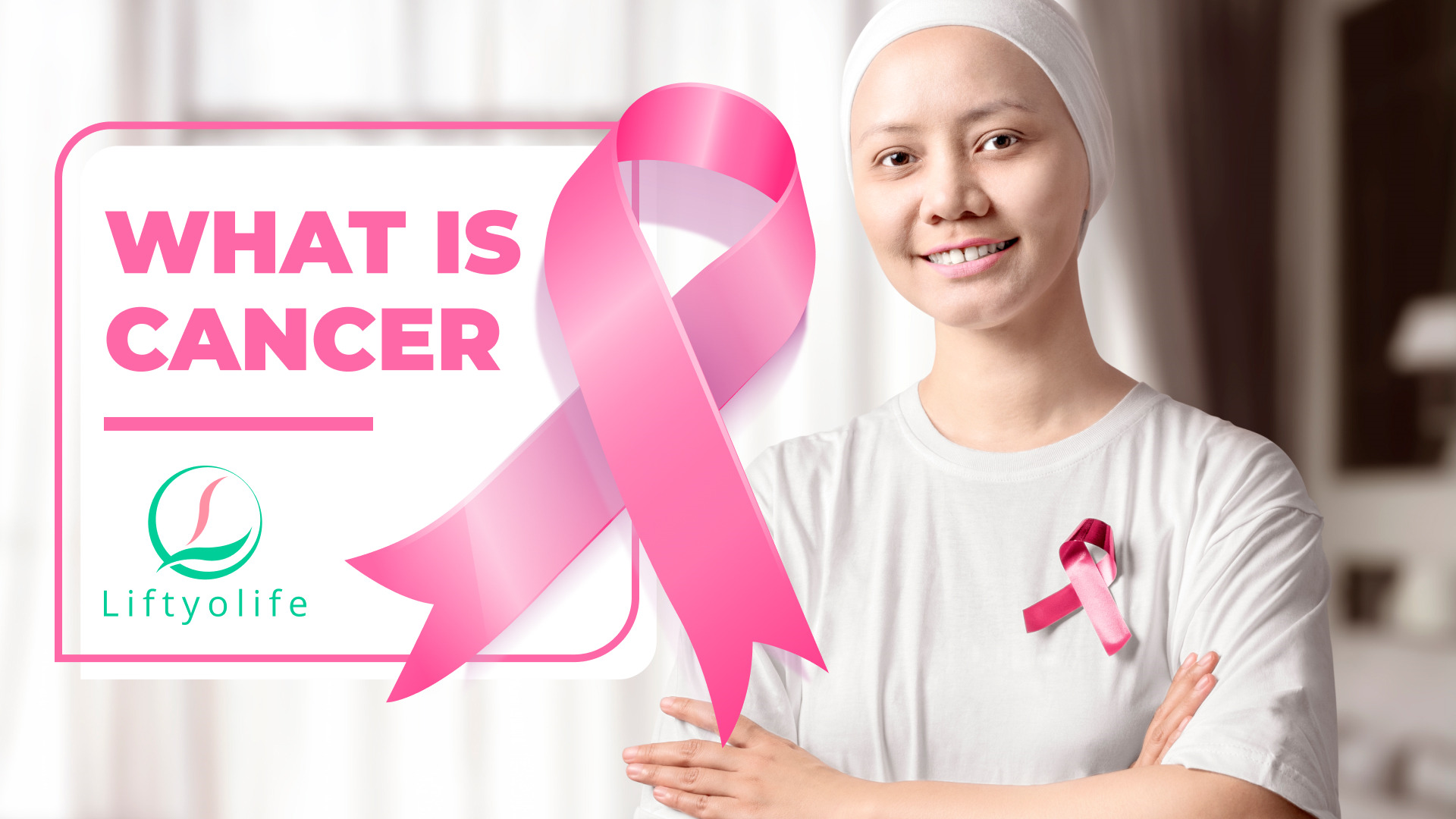13+ Types Of Breast Cancer

Learning more about 13+ types of breast cancer can help you know more clearly about this dangerous disease. Like many other ones, breast cancer is also a single disease, but it can be divided into numerous subtypes. Start figuring out the different kinds of breast cancer, including non-invasive, invasive, and metastatic breast cancers, and the intrinsic or molecular subtypes of breast cancer, in this article from Liftyolife (liftyolife.com). Let’s look into them now.
1. Types of breast cancer?
Breast cancer comes in various forms and subtypes. These types differ depending on:
- Where cancer began in your breast
- Whether it has spread
- Whether certain hormones aid in its growth.
This disease can start in various places, including the ducts, lobules, and, in some cases, the tissue in between.
Which treatment you receive is determined by the type of breast cancer you have. People who have the same type of breast cancer are usually treated in the same way.
These typical types of breast cancer including:
- Invasive ductal carcinoma (IDC)
- Invasive lobular carcinoma (ILC)
- Inflammatory breast cancer (IBC)
- Angiosarcoma of the breast
- Paget’s disease of the breast
- Phyllodes tumors
- Ductal carcinoma in situ (DCIS)
- Lobular carcinoma in situ (LCIS)
1.1. Types of invasive breast cancer
Invasive breast cancer means cancer cells have spread through the duct lining into the surrounding breast tissue. Most breast cancers are invasive, which means cancer has spread from the original site to other areas of the body, such as nearby breast tissue, lymph nodes, or elsewhere. Breast cancer cells that are invasive (infiltrating) break through normal breast tissue barriers and spread to other parts via the bloodstream and lymph nodes. Invasive ductal carcinoma and invasive lobular carcinoma are the two most common types of invasive breast cancer, accounting for approximately 75% and 15% of all cases in the US, respectively.

Types of invasive breast cancer
1.1.1. Invasive ductal carcinoma (IDC)
This is the most popular breast cancer type. Every year, more than 180,000 women in the United States are diagnosed with invasive breast cancer, according to the American Cancer Society. The majority of them have invasive ductal carcinoma (IDC). It accounts for approximately 8 out of 10 invasive breast cancers cases.
IDC is a cancer that begins in the cells that line a milk duct (the tubes in the breast carrying milk to the nipple). Cancer then spreads to other breast parts after breaking through the duct wall. It may spread far to other body parts through the lymph system and bloodstream over time or metastasize.
Although IDC can occur at any age in women, it is more common as they get older. According to the American Cancer Society (ACS) statistics, about 2/3 of women diagnosed with invasive breast cancer are 55 or older. Men are also affected by invasive ductal carcinoma.
1.1.2. Invasive lobular carcinoma (ILC)
The second most popular type of breast cancer is invasive lobular carcinoma (ILC). ILC accounts for more than 10% of all invasive breast cancers. Furthermore, ILC occurs later in life than IDC – in the early 60s as opposed to the mid – to late 50s.
ILC begins in the lobules (where breast milk is produced) and spreads to nearby breast tissue. It, like IDC, has the potential to spread. It can also spread to other body parts via the blood and lymph systems.
However, ILC may be more difficult to detect on physical examination and imaging than IDC, such as mammograms. Invasive lobular cancer does not always show up clearly on a mammogram, so that an MRI may be required in this case.
1.1.3. Inflammatory breast cancer (IBC)
Inflammatory breast cancer (IBC) is a rare and deadly type of breast cancer. According to the NCI (The National Cancer Institute), this fast-growing, aggressive cancer accounts for 1 to 5% of all breast cancers in the United States.
Instead of a distinct lump, IBC usually begins with reddening and swelling of the breast. It can be detected in the ducts or lobules and spreads more quickly than other types of breast cancer, with symptoms worsening within days or even hours.
Furthermore, it gets its name from the inflammatory symptoms it causes, which are typically redness and swelling on the surface of the breast. It frequently results in no discernible tumor or lump that can be felt outside and isolated within the breast. Because of these symptoms, it is commonly misdiagnosed as a breast infection. However, symptoms emerge when the lymph vessels are blocked by breast cancer cells. Therefore, IBC has a lower survival rate for these reasons.
1.1.4. Angiosarcoma of the breast
Angiosarcoma is a rare cancer that occurs in the inner lining of blood and lymph vessels. This cancer can develop anywhere in the body, but it most commonly affects the skin, breast, liver, and spleen.
Angiosarcoma is a type of cancer that spreads quickly and is often not detected until it has spread to other body parts. Though angiosarcoma can affect anyone, it is most common in people over 70. Complications from breast radiation therapy frequently cause it, but it may not appear for eight to ten years.
1.1.5. Paget’s disease of the breast
This is a rare type of cancer that affects the skin of the nipple and, in some cases, the areola, which is the darker circle of skin around the nipple. Cancer typically begins in the nipple ducts (small milk-carrying tubes), then spreads to the nipple surface and areola (the dark circle appears skin around the nipple). Nipple and areola are frequently scaly, red, itchy, and irritated. According to the NCI, the average age of diagnosis for men is 69 and 62 for women.
1.1.6. Phyllodes tumors
The name “phyllodes,” which means “leaflike” in Greek, refers to the tumor cells growing in a leaflike pattern. Phyllodes tumors, found in the breast’s connective tissues, are sporadic, accounting for less than 1% of all breast tumors. According to the ACS, approximately 25% of phyllodes tumors are cancerous. This type of tumor primarily affects women in their 40s, though it can affect patients of any age.
Although the majority of phyllodes tumors are benign (noncancerous), some are malignant (cancerous), and others are borderline (in between noncancerous and cancerous). All three types of phyllodes tumors multiply and require surgery to reduce the risk of a phyllodes tumor returning to the breast (local recurrence). Phyllodes tumors in men are incredibly uncommon.
1.2. Types of noninvasive breast cancer
In situ breast cancer, cells are non-invasive and remain in a specific location of the breast, not spreading to surrounding tissue, lobules, or ducts. In situ breast cancer is defined as cancer that has not spread beyond the milk ducts or lobules. Moreover, they are classified into two types: ductal carcinoma and lobular carcinoma.

Types of noninvasive breast cancer
1.2.1. Ductal carcinoma in situ (DCIS)
Ductal carcinoma in situ (DCIS) is non-invasive breast cancer. Ductal cancer begins inside the milk ducts, carcinoma cancer starts in the skin or other tissues (inclusive of breast tissue) that cover or line the internal organs, and in situ cancer begins “in its original place.” DCIS is “non-invasive” because it has not spread beyond the milk duct into the normal breast tissue. DCIS is not fatal, but it does increase the risk of developing invasive breast cancer later in life.
When you have DCIS, you are more likely to have the cancer return or develop new breast cancer than those who have never had breast cancer before. The majority of recurrences occur within 5 to 10 years of the initial diagnosis. And the chances of a recurrence are less than 30%.
1.2.2. Lobular carcinoma in situ (LCIS)
An LCIS is not technically cancer but rather a change in the breast. Tens of thousands of tiny clusters of lobules produce breast milk in the breast. Inside these lobules, cancer-like cells may increase. LCIS tends to stay put and not spread. However, because LCIS increases your risk of invasive breast cancer, you should address any changes as soon as possible.
LCIS is most commonly diagnosed between 40 and 50 before menopause. Less than 10% of women diagnosed with LCIS have already reached menopause. LCIS is extremely rare in men.
2. Other types of breast cancer
2.1. Mucinous carcinoma (colloid)
Mucinous breast carcinoma (colloid) is a rare type of invasive ductal carcinoma (cancer cells that begin in the milk duct and spread into nearby healthy tissue). The tumor in this type of cancer is composed of abnormal cells that “float” in pools of mucin, a key component of the slimy, slippery substance known as mucus. Mucin becomes incorporated into the tumor and surrounds the breast cancer cells. Under a microscope, the cancer cells appear to be dispersed throughout pools of mucus.
2.2. Medullary carcinoma
Medullary carcinoma is a rare subtype of IDC (cancer that begins in the milk duct and spreads beyond it), accounting for about 3-5% of all breast cancer cases. The tumor is called “medullary” carcinoma because it is a soft, fleshy mass that resembles the medulla, a part of the brain.
2.3. Breast cancer during pregnancy
Breast cancer can be diagnosed in a pregnant woman, but it is uncommon, and breast cancer is not caused by pregnancy.
Although cancer cannot spread to and harm the unborn child, the best treatment plan for the mother may sometimes endanger the unborn child. These decisions will necessitate the advice and expertise of your obstetrician, surgeon, medical oncologist, and radiation oncologist.
2.4. Tubular carcinoma
Tubular carcinoma is a subtype of IDC (cancer that begins in the breast’s milk duct and spreads into healthy tissue). Tubular carcinomas are typically small (less than 1 cm in diameter) and composed of tube-shaped structures known as “tubules.” These tumors are generally low-grade, which means that their cells resemble normal, healthy cells and grow slowly. This subtype accounts for about 2% of all breast cancer diagnoses, is found in women over 50, and usually responds well to hormone therapy.
2.5. Angiosarcoma
Breast sarcomas are extremely rare, accounting for less than 1% of all breast cancers. Angiosarcoma begins in the cells that line blood and lymph vessels. It affects either the breast tissue or the breast skin. Some of these symptoms could be related to prior radiation therapy in that area.
The above-mentioned types of breast cancer are both common and rare, as well as cancerous and noncancerous. Determining the type of breast cancer will quickly determine the appropriate and effective treatment. In addition, making lifestyle changes may help reduce your risk of breast cancer. Furthermore, women between 40 and 54 should begin yearly breast cancer screening with mammograms. Women over the age of 55 should have a mammogram every two years or once a year.
==> Read More:







